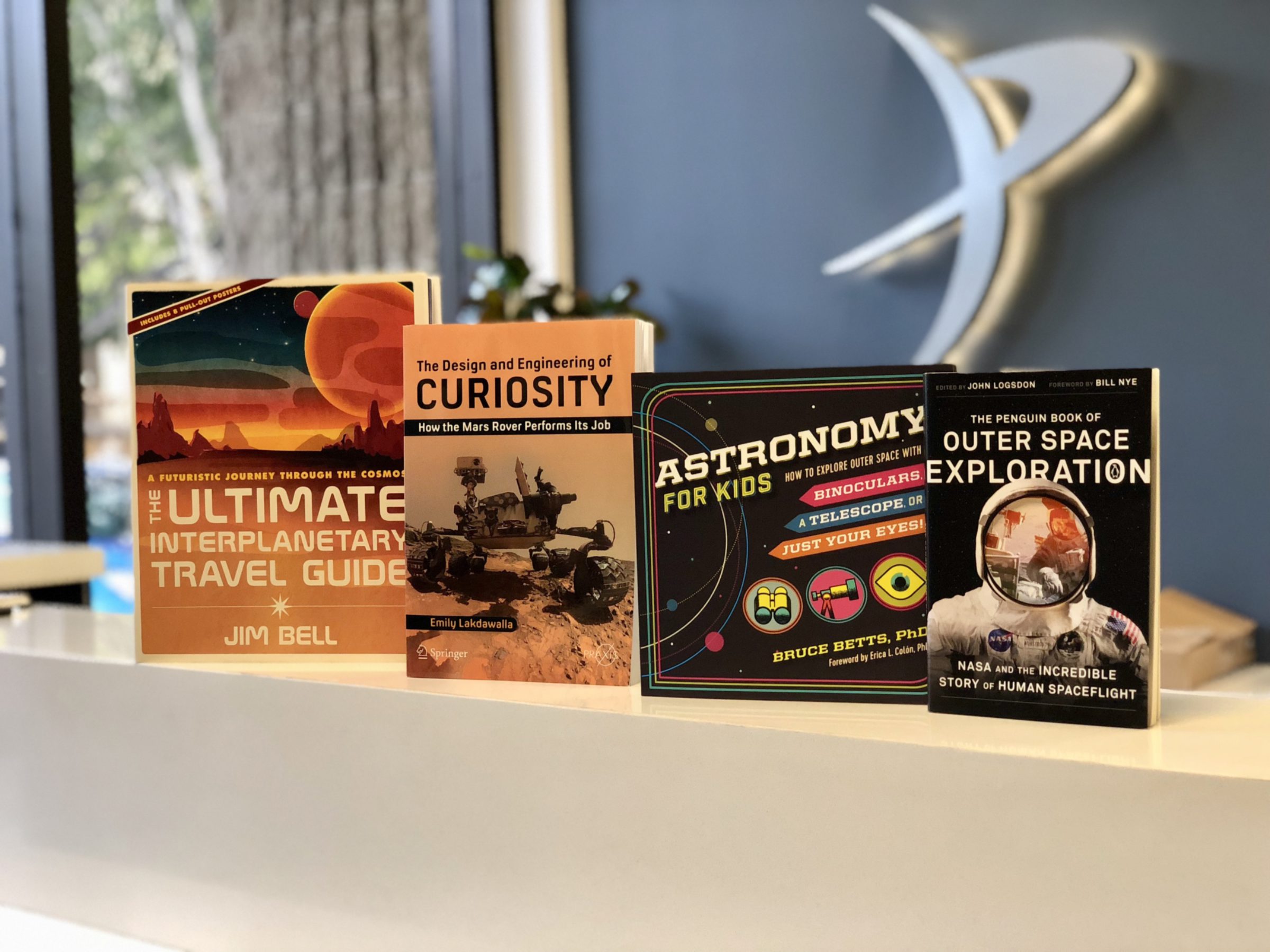Mark Hilverda • Nov 23, 2018
Gift Ideas From Space Enthusiasts For Space Enthusiasts
The Planetary Society's Gift Guide
Looking for our 2019 space gift guide? Here it is!
Season’s greetings from The Planetary Society! There are celebrations of life, love, friendship, and culture happening on our planet as it makes its way around our star, passing through solstice, in the coming months. While the upcoming holiday season has different meanings for everyone, this time of year is often accompanied with the sharing of gifts.
As you know, we here at The Planetary Society love sharing the passion, beauty, and joy of space exploration. So we’ve rounded up some space gift ideas and recommendations from several of our staff to help bring some of the cosmos into your holidays.
Please note that links to Amazon lead to Amazon Smile, where any purchases made will allow you to designate The Planetary Society to receive a small portion of the proceeds of your purchase from Amazon.

Bruce Betts: Xtronaut Games
When NASA canceled the funding for education and outreach for the OSIRIS-REx mission, the leader of the mission helped form XTRONAUT to ensure the next generation would be inspired.
Like space exploration, board games bring people together, so board games that feature space exploration are perfect for gathering with friends and family. As part of its STEM outreach, XTRONAUT has created several board games that successfully do just that.
Bruce Betts, Chief Scientist at The Planetary Society, explains why there’s a lot to like to about these games:
"What I like about all the games is they combine fun gameplay with science concepts. Xtronaut and Downlink reflect aspects of actual space missions, facilitated by game creator Dante Lauretta who is the head of the OSIRIS-REx asteroid sample return mission. Constellations uses actual constellations and stellar science concepts."
Xtronaut and Constellations are available from Amazon and other retailers. There’s still time remaining to support their latest game, Downlink, via their Kickstarter project.

Casey Dreier: Build the Apollo stack
When LEGO first announced their NASA Apollo Saturn V set, it captured our attention and has found a home in the offices of several Planetary Society staff.
The enormous Saturn V rocket resulted in an appropriately enormous LEGO set. The box contains a total of 1,969 pieces (a nice nod to the launch year of Apollo 11) and when completed, builds a Saturn V rocket just over 3 feet (100 cm) in length, with detachable(!) rocket stages, LEM, Service Module, and Command Module.
“It’s not just a beautiful rocket, it’s a beautiful build,” says Casey Dreier, Chief Advocate & Senior Space Policy Adviser for The Planetary Society. “This is very possibly my favorite LEGO set of all time.”

Jason Davis: Launch your own rocket
The rise of the private sector in space exploration makes it seem like almost everyone is launching rockets these days. You should be launching some too.
There’s a real thrill to watching a rocket launch in person. Although they don’t reach the same heights, and aren’t quite as loud, model rocket launches bring their own excitement. As a bonus, everyone learns a little more about rocket science in the process.
Jason Davis, digital editor at The Planetary Society, has shared his love of rocket launches with his daughter through model rocketry and highly recommends everyone try launching their own:
"It’s really satisfying to start with a cardboard tube and balsa wood and end up with a real rocket flying up in the air. Doing it with a kid challenges you to explain some very basic things about rocket science, such as why the fins need to be straight, how the igniter works, and why you need to take safety precautions. I recommend starting with an all-in-one kit from a local hobby shop if you have one.”
If there’s no local hobby shop in your area, starter kits are also available at Amazon and other retailers.
![]()
Emily Lakdawalla: Space style
Space exploration inspires creativity. Since the dawn of humanity, space has shared a special relationship with art and design. Emily Lakdawalla’s gift ideas beautifully explore this artistic relationship.
“The Internet has made it possible for small-time artists with great ideas to distribute their beautiful work globally. Every time I wear jewelry from the Britain-based Eclectic Eccentricity or Turkey-based Teomandesign, I get compliments and a rapturous ‘Where did you get that?’ The answer: direct from the artists! For the kids, you can’t go wrong with the durable, play-friendly geekwear from Svaha and Princess Awesome.”
If you’d like to explore more options for space exploration clothing and accessories, be sure to visit Emily’s geekwear Tumblr. Her 2018 book selections are also a recommended review for book lovers in your circle of family and friends.
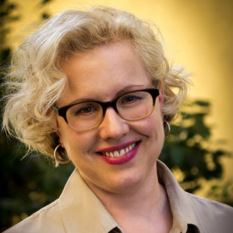
Robin Young: Night sky jewelry
Space-themed jewelry is popular among many staff at The Planetary Society. Robin Young, our donor relations manager, suggests also exploring Yügen Tribe’s Galaxy collection for space- and planetary-themed jewelry:
“Hand-crafted in a tiny mountain town in Maryland, Yugen Tribe creates lovely space-themed jewelry, perfect for displaying your love of the cosmos. Yügen is a Japanese word denoting ‘a profound, mysterious sense of the beauty of the universe,’ and these pieces truly capture that feeling.
I particularly like the moon phase pendants and rings, which are made to show the exact phase of our moon at a specific time, date, and location. It’s a cool way to commemorate a special date for yourself or someone you love."
(Full disclaimer: Yügen Tribe is one of The Planetary Society’s corporate partners)
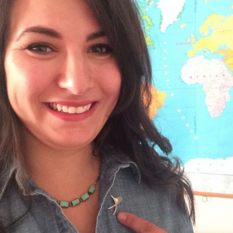
Danielle Gunn: Crystal solar system ball
Models of our solar system help us understand our planet in context of the other worlds that share our small neighborhood in the Milky Way galaxy. Danielle Gunn, director of marketing and communications at The Planetary Society, describes how exploring a version of the solar system that fits in your hand can be fascinating:
“Of all the space-themed items I own, this crystal solar system ball is my favorite. I keep it on my desk at The Planetary Society and it captivates every visitor. When I show it to people, we always share in the delight of the tiny major moons they include.
“It holds a special memory for me as I found it while visiting the US Air Force Space and Missile Museum Foundation gift shop in Cape Canaveral, Florida, when our team attended the launch of LightSail 1.”
If you’re not near the gift shop in Cape Canaveral (the gift shop’s online store does not list the globe) it can be found online elsewhere, including on Amazon.

Richard Chute: Chop Shop poster art
Poster art has powered the imagination of space enthusiasts for generations. At the Society, we are delighted to partner with noted graphic designer Thomas Romer of Chop Shop. Chop Shop, of course, is the host of our own online store, but Thomas has a wider collection of space art available on his website, too.
Richard Chute, our chief development officer, points to Thomas' work for younger ages as an opportunity to help recruit youth to the cause of space exploration. And the holidays provide the perfect excuse for sharing the passion, beauty and joy of space exploration with those you care about most.
(Full disclaimer: Chop Shop is one of The Planetary Society’s corporate partners)

Andrew Pauly: Planetary globes
Globes are like planets you can hold in your hand or set on your desk. They’re a great way to tangibly explore other worlds, learn about surface features, and decorate your room.
But what about when you’re not interacting with them? Most globes just stay in the last position you left them, unlike real planets, which constantly rotate. However, MOVA’s outer space collection of globes spin on their own without a source of electricity.
Andrew Pauly, communications manager for The Planetary Society, explains why he likes MOVA globes:
“These desk treasures are just the coolest. They rotate slowly by ambient light and make me feel like a hip space dude with some high-class space art. I have the Jupiter model in my home and everyone who sees it is totally mesmerized.”
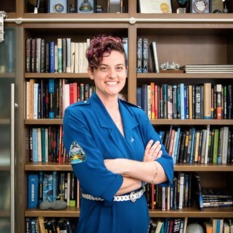
Whitney Pratz: Pretty pictures of our home planet
Our pale blue dot is home to not only us humans, but also home to beautiful planetary features. My Orbiter captures views of our world from space in stunning 30cm resolution imagery. Prints are available in a variety of sizes so you can enjoy incredible, artistic views of our world.
Whitney Pratz, partnerships manager at The Planetary Society, worked with My Orbiter to help them get involved with our Partnerships program. Her favorite image is the view of Kennedy Space Center. She describes how this imagery inspires:
“These images so beautifully capture natural and human-made works of art that make Earth so special. They give me a higher perspective on the work I do at The Planetary Society.”
(Full disclaimer: My Orbiter is one of The Planetary Society’s corporate partners)

Bill Nye: The gift of membership
Whether you know a space enthusiast, or want to encourage someone to explore the wonders of the cosmos, a gift membership to The Planetary Society welcomes them into the world’s largest independent space interest group.
Bill Nye, CEO of The Planetary Society explains:
“At The Planetary Society, passionate space fans like you join forces to create our own missions, nurture new science and technology, advocate for space, and educate the world—all to advance space exploration. We’re your place in space!”

Mat Kaplan: Harness the Sun’s energy and explore the cosmos
The host of Planetary Radio, Mat Kaplan, has gift ideas for budding engineers interested in robotics or solar power and those who want to explore the night sky in telescopic detail.
“There must be 20 books I could recommend, so here’s a solar marble machine toy instead. It’s only slightly spacey, but I love it so. The silly thing runs and runs—slowly under indoor lighting, but like a solar-powered bat out of hell in sunlight. Building it requires moderate dexterity and some soldering, so it’s a good parent and child project.
“And here’s just the thing for lazy astronomers like yours truly who have a few more dollars to spend. It’s a very nice, computerized Celestron Newtonian reflector that includes their terrific go-to system. It takes you straight to any of over 4,000 objects in the sky, after you’ve helped the scope align itself. Ad Astra, indeed.”

Jennifer Vaughn: Planetary books for all ages
“What an astonishing thing a book is,” wrote Carl Sagan, co-founder of The Planetary Society. Books have always played an important role in teaching and learning about space exploration, and our chief operating officer, Jennifer Vaughn, recommends four new space books written by people at The Planetary Society. One is aimed at kids, two are great for space fans of any age and experience level, and the fourth is a wonderful deep-dive into NASA’s Curiosity mission on Mars.
The Penguin Book of Outer Space Exploration: NASA and the Incredible Story of Human Spaceflight
Using primary sources, John Logsdon, Board Member, shares the story of how NASA sent humans into space and to the Moon. This book is full of historical documents and communications that get to the details of NASA’s early human spaceflight efforts.
The Ultimate Interplanetary Travel Guide: A Futuristic Journey Through the Cosmos
Jim Bell, President of The Planetary Society’s Board, takes readers on a journey across worlds within our solar system and beyond in this delightfully illustrated book.
The Design and Engineering of Curiosity: How the Mars Rover Performs Its Job
Emily Lakdawalla, The Planetary Society’s senior editor and planetary evangelist, explores the Mars rover Curiosity in detail not found anywhere else. As Emily describes her book, “It explains what the rover was designed to do, how it works, and how it has fared, mechanically, on Mars. It is a reference work, virtually an owner’s manual to the Mars Science Laboratory mission."
Astronomy for Kids: How to Explore Outer Space with Binoculars, a Telescope, or Just Your Eyes!
The Planetary Society’s chief scientist, Bruce Betts, brings astronomy to people of all ages. Our CEO, Bill Nye, best describes this book: “No matter how many times you’ve orbited the Sun, Astronomy for Kids is really for kids of all ages. Dr. Betts shows you how to become an astronomer?an observer of the stars. With this book, you can know the cosmos and your place within it. Read on, walk out, and look up!”

Mark Hilverda: Space-time
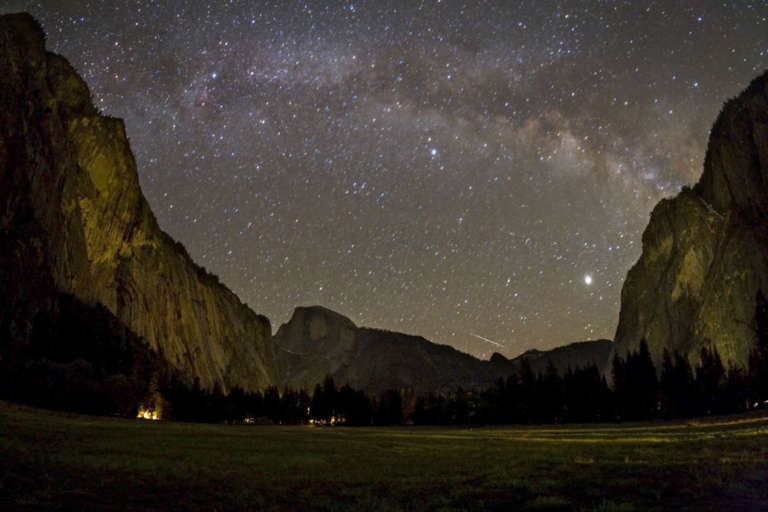
The gift of time can be elusive, but consider sharing the cosmos itself with a friend or family member over the holidays. Find some dark skies, a comfortable location, and look up.
Allow photons that have traveled from planets, distant stars, and galaxies to land on your eyes. Let your imagination wander as you consider what it may be like to stand on the surface of a different world. Take a deep breath and consider the vastness of the cosmos and your place...your loved ones’ place...humanity’s place, within it.
Along the way, identify some of the objects you’re seeing in the night sky. If you know some, point them out to the person you’re with, or learn something new about the night sky with a handy resource -- might we suggest Bruce Betts’ new book? Try and locate Mars and think about all of the robots orbiting the red planet and exploring its surface. You’re part of the global human family that’s exploring beyond the shores of our home world.
Sharing the passion, beauty, and joy of space connects people. There’s never a shortage of new worlds to explore. So take the time to share. Space is for everyone.
The Time is Now.
As a Planetary Defender, you’re part of our mission to decrease the risk of Earth being hit by an asteroid or comet.
Donate Today

 Explore Worlds
Explore Worlds Find Life
Find Life Defend Earth
Defend Earth












